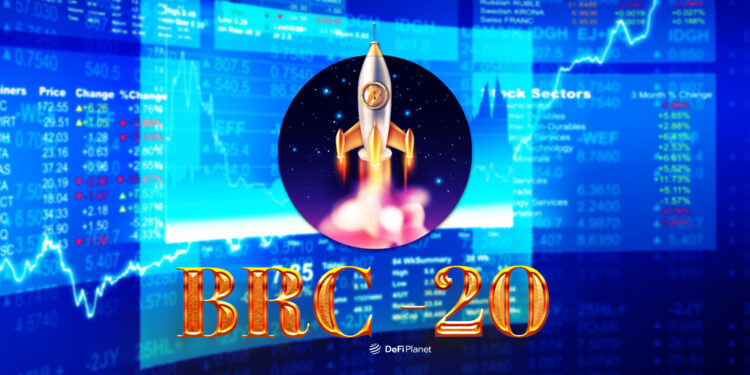Before the introduction of the Ordinals protocol, Bitcoin was largely regarded as a ‘boring’ blockchain. Since its inception in 2009, the pioneer blockchain has focused on serving as a peer-to-peer system for value exchange, aligning with the original vision of its creator, Satoshi Nakatomo.
Innovations on the network were largely directed towards that singular purpose. This unidimensional focus, though appealing to hardcore enthusiasts, ran the risk of not resonating with the broader masses. And that was ‘partly’ what happened.
The exclusive emphasis on the digital currency being a “store of value” found traction among devoted followers but struggled to gain widespread appeal. As a result, alternative blockchains emerged, driven by the need for faster and more versatile solutions.
Ethereum emerged as one of the most successful alternatives to Bitcoin, as it replicated its foundation but went beyond being just a peer-to-peer cash system.
Ethereum allowed for decentralized applications (dApps), which enabled the creation of various cryptocurrencies on its network, fostering high-quality decentralized financial services, revolutionizing the gaming industry with the advent of “play-to-earn,” and introducing NFTs as a new form of digital art.
Beyond Ethereum, diverse innovative blockchains surfaced, offering a broader spectrum of services that Bitcoin lacked. Consequently, Bitcoin lagged behind as newer blockchains secured major partnerships with industry leaders in the art, sports, and automotive sectors.
However, this trend of Bitcoin being left behind changed with the introduction of the Ordinals protocol. Ordinals drove innovation directly on the Bitcoin chain and paved the way for the creation of BRC-20 tokens and Bitcoin NFTs, which on the side challenged the presumption of many at the time that NFTs were dead.
The protocol breathed life into the OG blockchain and, for the first time in a long time, showed that Bitcoin can be more than just a peer-to-peer value transfer blockchain.

Ordinals Marketplace

This transformative moment for Bitcoin was very evident. In a short period of barely one year, Ordinals inscriptions surged, capturing the attention of crypto enthusiasts from various chains and even those outside the crypto space.
This surge in activity led to a notable migration of NFT owners and developers from Ethereum to Bitcoin. Many digital artists also seized the unique opportunity to express themselves on the oldest and most secure blockchain globally, injecting a renewed sense of innovation into the Bitcoin ecosystem.

The innovation not only attracted traders, investors, and attention to the core Bitcoin space but also intensified the drive among Bitcoin developers. Miners on the Bitcoin network benefited from increased network fees and were able to generate substantial profits.
While some viewed the Ordinals protocol as just another innovation in the blockchain space, discerning observers and analysts recognized the seismic shift it brought. It represented a new wave of innovation, hype, and experimentation within the Bitcoin ecosystem, which had been absent before its introduction.
However, a big question still looms over this new protocol: will it stand the test, or will it just fizzle away?
Bitcoin Ordinals: Mainstream Acceptance Or Rejection?

During the 2023 Blockchain conference, numerous Ethereum developers took centre stage to showcase how their projects take advantage of the Ordinal protocol.
One noteworthy example is Eril Ezerel, the founder of Subjective Labs, who introduced an Ordinals explorer capable of tracking over 1,000 Ordinals collections. Ezerel remarked, “Now that it’s been discovered, people are returning to crypto’s oldest coin in large numbers.”
While Ezerel’s statement may carry a degree of exaggeration, it holds substantial implications. The migration of prominent and valuable NFTs from rival blockchains to Bitcoin suggests a significant role reversal, positioning Bitcoin to further solidify its status as the leading digital asset platform and more than just a peer-to-peer value transfer system. The OnChainMonkey Story serves as an illustration of this paradigm shift unfolding rapidly.
The Bitcoin ETFs Effect
2023 was the year when numerous traditional financial institutions decided to embrace the Bitcoin trend through ETFs. Questions have been raised about the impact of mainstream adoption on Ordinals and BRC-20 tokens. Will these institutions perceive them as value drivers for Bitcoin or dismiss them as mere ‘bugs,’ as Luke Dashjr described it?
Understanding why these institutions are entering what some view as a speculative industry is crucial. The primary motivators for these large investment firms are profits and growth. Crypto, particularly Bitcoin, is seen as an untapped opportunity for innovative growth beyond traditional assets.
The appeal lies in the potential for increased revenue, diversification, and tapping into the growing interest in digital assets, including NFTs. The approval of Bitcoin ETFs is expected to trigger a rush among these institutions to invest in the Bitcoin ecosystem in a regulated manner.
If Ordinals on the Bitcoin network are viewed as a means of diversifying the value of Bitcoin, separate from trading, it will receive support, which will encourage widespread acceptance.
Unlike NFTs on other blockchains, Ordinals inscriptions truly exist on-chain, which could be seen as a value driver on its own, potentially prompting broader adoption and use.
Bitcoin’s dynamic nature and evolution from Satoshi Nakamoto’s original vision suggest that these institutions may become more deeply involved in Bitcoin than originally anticipated.
Bitcoin ETFs are expected to introduce Bitcoin to the global mainstream and establish it as a new asset class. This development has already started showing its ripple effects as it has triggered a new wave of ETF applications, more specifically, Ether spot ETFs. It will undoubtedly flow down to potentially influence mainstream involvement and investment in other DeFi services, including Ordinals and NFTs built on these platforms.
The blockchain industry is slowly gaining legitimacy through Bitcoin and is poised for exciting times ahead, and the notion that Bitcoin ETFs serve as a trojan horse to legitimise and bring other underlying innovations, such as Ordinals, into the mainstream, seems plausible.
Gas Fees Debacle
While Ordinals potentially provides another use case for Bitcoin as it chases widespread adoption, it might be a cause for it to falter. The emergence of Ordinals and BRC-20s has ignited a contentious discussion within the Bitcoin community, resembling a sort of “civil war” over ‘gas fees.’
In contrast to straightforward peer-to-peer transactions, the creation and transfer of BRC-20 tokens are intricate processes that demand more blockchain space. While a typical bitcoin transaction may be quantified in kilobytes, an Ordinal inscription, the foundation for a BRC-20 token can occupy up to 4MB in size. This entire size contributes to the transaction on the bitcoin blockchain, impacting the associated on-chain transaction costs.
One faction of Bitcoin enthusiasts contends that the blockchain should exclusively accommodate financial transactions to maintain minimal fees. Conversely, another faction values the additional innovation and functionality introduced to Bitcoin by the Ordinals protocol, intensifying the debate.
The controversy has led some miners to take a stance by excluding inscriptions from their mining block templates, as observed in Luke Dashjr’s Ocean Pool. This heated debate even took centre stage at the Bitcoin Conference in 2023 as “The Great Ordinal Debate.” Participants passionately argued both in favour of and against the necessity of inscriptions on the Bitcoin network.
The discourse occasionally became personal, but in the end, the moderator, Pete Rizzo, offered his concluding thoughts, “I think Bitcoin is changing, and I think it’s important to have an adaptive mental model of what Bitcoin is.”
Disclaimer: This piece is intended solely for informational purposes and should not be considered trading or investment advice. Nothing herein should be construed as financial, legal, or tax advice. Trading or investing in cryptocurrencies carries a considerable risk of financial loss. Always conduct due diligence.
If you want to read more news articles like this, visit DeFi Planet and follow us on Twitter, LinkedIn, Facebook, Instagram, and CoinMarketCap Community.





















